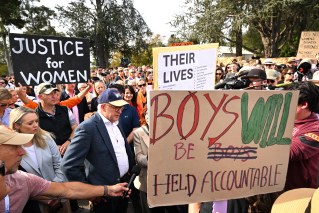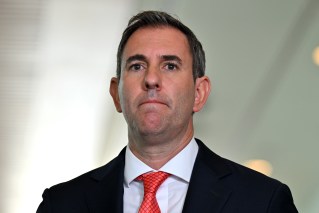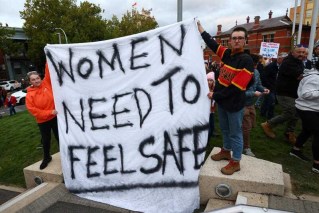Welfare payment boost expected for people aged over 55
Welfare recipients aged 55 and older are expected to receive a boost to their JobSeeker payments in a plan designed to help women and the long-term unemployed.
The top-up payments first reported by Seven News, and expected as part of next week’s federal budget, would affect about 227,000 people and complement other changes to Centrelink.
However, welfare advocates raised concerns the increase was more modest than the $100 a week they are seeking across the board and would exclude more than 680,000 younger people on JobSeeker and Youth Allowance.
Treasurer Jim Chalmers has refused to confirm the move but said the budget would include cost of living relief for Australia’s most vulnerable.
“There’ll be responsible cost of living relief in the budget, and it will focus on the most vulnerable people,” he told ABC Radio on Tuesday.
“There’ll be a number of elements to it. It won’t all be limited to one cohort or another.”
Amid criticism about the age cap and that young people would miss out, Dr Chalmers said no government could satisfy every call for more spending.
“The JobSeeker payment … already pays a different rate at the moment for people over 60 and that’s in recognition that it’s harder to find a new job at that end of your working life,” he said.
“Women over 55 are the most vulnerable group amongst unemployed Australians. We’ve indicated before we want to do something to help them in particular.”
Greens social services spokesperson Janet Rice said isolating an increase to over-55s would leave young people living below the poverty line.
“We don’t accept their lie that there’s not enough money to raise the rate for everyone,” Senator Rice said.
“Poverty is a political choice and the Labor government is spending $368 billion on nuclear submarines and $254 billion on tax cuts for the rich, instead of doing the bare minimum for people in a cost-of-living crisis.”
Jas Walker, spokesperson for youth advocacy group Tomorrow Movement, said many young people were struggling to pay for rent, bills, food and health care.
The group has recorded stories of young people dropping out of their studies because they couldn’t pay for essentials, and many were permanently couch-surfing or sleeping in their cars.
“If the government doesn’t raise income support for all, including Youth Allowance, rent assistance and disability support payments, this budget will keep thousands of Australians in poverty,” Ms Walker said.
Opposition Leader Peter Dutton said the government needed to get the balance right and encourage people to work, noting he hadn’t seen the detail of the proposal.
But he said small businesses were struggling to fill worker shortages.
“It’s frustrating if you’ve got Australians who have an ability to work or refusing to work,” he told 2GB Sydney.
“There is a great argument for bringing back ‘work for the dole’. It provides an incentive to move off the dole into work, which is a better life for them.”
Stubbornly high commodity prices, strong population growth and the rock-solid jobs market have left Commonwealth coffers in much better shape than expected.
Independent economist Chris Richardson said the good times were not expected to last, which meant the government would need to get serious about repairing the budget.
On his list for raising more revenue is trimming – but not scrapping – the stage three tax cuts, reworking the petroleum resources rent tax levelled at oil and gas producers, dropping the capital gains tax to 33 per cent and cracking down on trusts.
Treasury revised revenues up by $149 billion in the October budget and Mr Richardson expects it to be about another $96 billion in May.
Dr Chalmers said while the budget would be better than expected, talk of a surplus was premature.
“The numbers are still bouncing around a bit,” he said.
“There are still a couple of decisions to finalise and we don’t print the budget until the weekend so it’s a bit premature.”
The government has also announced changes to how employers pay super. From July 1, it will have to be paid at the same time as wages and salary.
The changes will leave the average 25-year-old earner about 1.5 per cent better off in retirement because more frequent payments leave more time for compounding interest.
Emergency warnings and alerts will also be upgraded, in addition to improved communication for emergency services workers.
The government will be able to target communities or geographic areas – regardless of the network provider – with the message to temporarily “take over” the screen to ensure it is seen and does not get mistaken for spam.
– AAP








